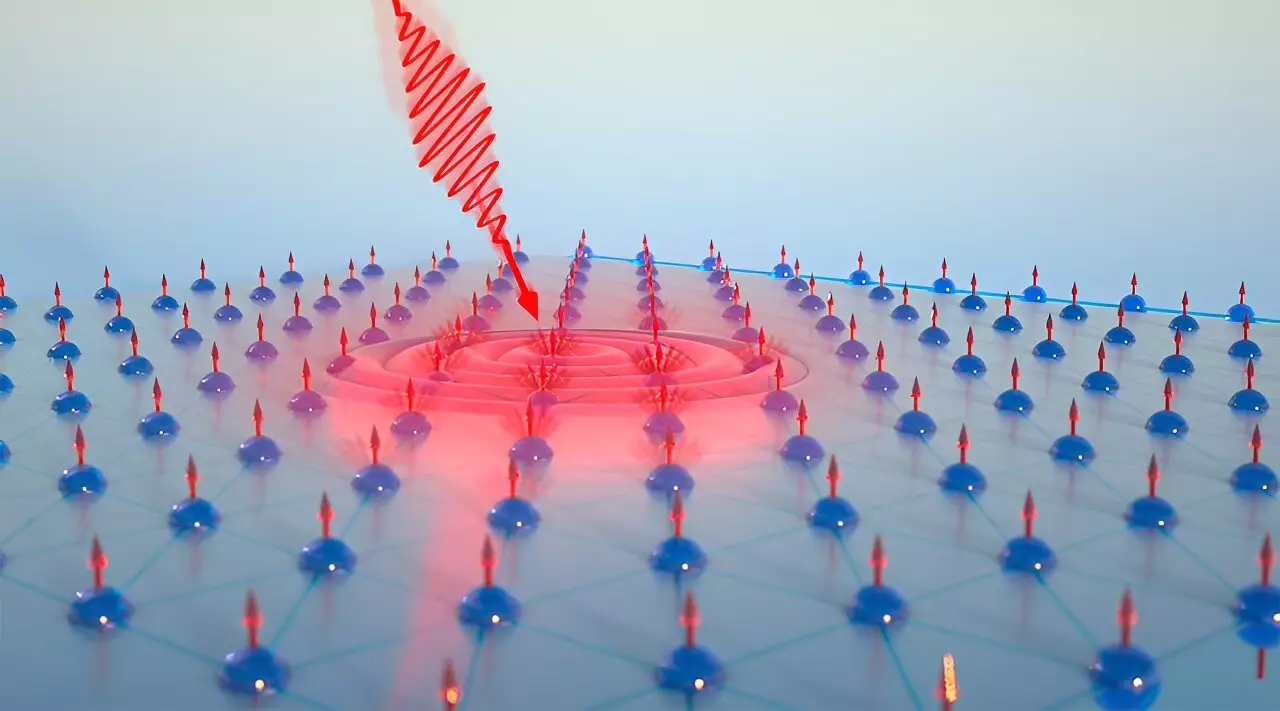The relentless pursuit of more efficient data storage solutions has driven scientists to explore various cutting-edge materials. Recent research at the University of Chicago’s Pritzker School of Molecular Engineering has uncovered promising developments in this realm. A team, led by Assistant Professor Shuolong Yang, has discovered surprising properties in manganese bismuth telluride (MnBi2Te4) that could herald a new era in optical memory technology. By investigating this sophisticated material, researchers have tapped into its unexpected capacity to quickly and energetically manage computational data.
Manganese bismuth telluride (MnBi2Te4), long recognized for its intriguing characteristics as a magnetic topological insulator (MTI), exhibits unique electrical properties. An MTI typically functions as an insulator in its bulk, conducting electricity along its edges. This allows for the possibility of “electron freeways,” which can serve as conduits for encoding and transmitting quantum data. However, the material presented significant challenges for researchers seeking to harness its potential.
Yang and his team initially set out to clarify the reasons behind the difficulty in observing the expected topological characteristics of MnBi2Te4. Despite theoretical projections indicating its capacity for sustaining robust electron trajectories, practical experiments have struggled to replicate these results. The team employed advanced spectroscopy techniques to unearth insights into the electronic behaviors taking place at the material’s surface.
The study utilized time- and angle-resolved photoemission spectroscopy (tr-ARPES) alongside time-resolved magneto-optical Kerr effect (MOKE) measurements to track electron activity in real-time. These advanced techniques provided unprecedented clarity regarding the interaction between photons and electrons in MnBi2Te4. This multifaceted approach allowed the researchers to visualize the nuances of how electrons move and how their properties respond to external light stimuli—key indicators for potential applications in optical memory devices.
What emerged from this analysis were significant insights into the dualistic nature of the electrons present in MnBi2Te4: one set embodying the anticipated topological properties while the other emerged as a quasi-2D electronic state. While the latter wasn’t advantageous for sensitive quantum information processing, it displayed remarkable coupling between magnetism and light, an essential feature for designing efficient optical memory.
This discovery raises intriguing possibilities for leveraging MnBi2Te4 as a high-energy efficient optical memory solution. Current memory technologies often consume significant power and cannot efficiently manage increasingly large data sets. The unique properties of MnBi2Te4 may allow for a radical rethinking of how data is stored and accessed. Yang expressed optimism, suggesting that future experiments involving laser manipulation of the material could yield optical memory devices that are orders of magnitude more efficient than prevailing electronic memory technologies.
By exploring how the balance between the two competing electron states can be optimized, researchers could pave the way for improved MTI functionality in quantum data storage. This direction not only has implications for the future of computing but also enhances our understanding of fundamental material properties.
Yang’s research underlines the broader significance of fundamental science in shaping engineering applications. The serendipitous discovery of MnBi2Te4’s potential not only shifts the focus towards energy-efficient solutions but also sparks curiosity about other materials that might harbor unexplored characteristics. As scientific exploration continues to unveil new pathways, the dream of achieving faster, more reliable data storage could soon become a reality, enabling advancements across multiple domains in technology.
In closing, the journey of MnBi2Te4 from an elusive material to a potential game changer in optical memory technology serves as a testament to the power of scientific inquiry. The balance of theory, experimentation, and discovery is crucial in pushing the frontiers of what is possible, ensuring that innovation continues to thrive amid the complexities of modern challenges.


Leave a Reply